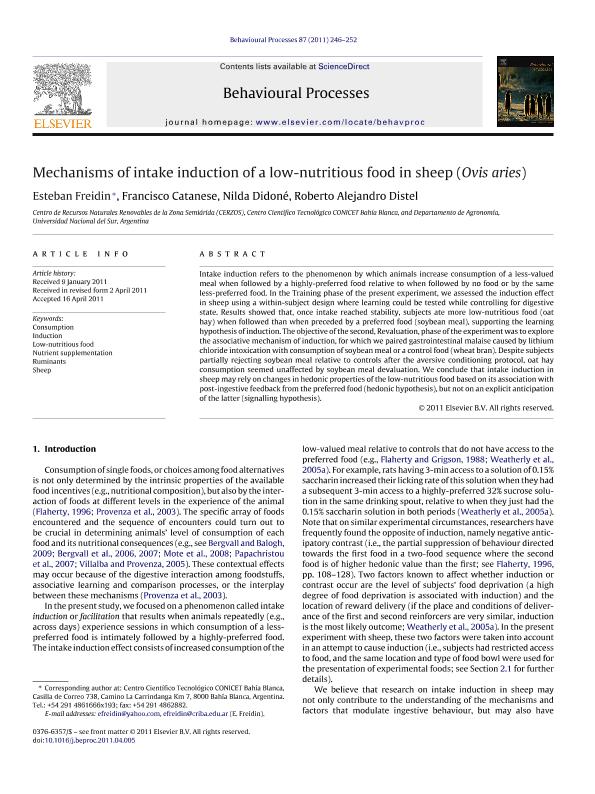Artículo
Mechanisms of intake induction of a low-nutritious food in sheep (Ovis aries)
Fecha de publicación:
07/2011
Editorial:
Elsevier Science
Revista:
Behavioural Processes
ISSN:
0376-6357
Idioma:
Inglés
Tipo de recurso:
Artículo publicado
Clasificación temática:
Resumen
Intake induction refers to the phenomenon by which animals increase consumption of a less-valued meal when followed by a highly-preferred food relative to when followed by no food or by the same less-preferred food. In the Training phase of the present experiment, we assessed the induction effect in sheep using a within-subject design where learning could be tested while controlling for digestive state. Results showed that, once intake reached stability, subjects ate more low-nutritious food (oat hay) when followed than when preceded by a preferred food (soybean meal), supporting the learning hypothesis of induction. The objective of the second, Revaluation, phase of the experiment was to explore the associative mechanism of induction, for which we paired gastrointestinal malaise caused by lithium chloride intoxication with consumption of soybean meal or a control food (wheat bran). Despite subjects partially rejecting soybean meal relative to controls after the aversive conditioning protocol, oat hay consumption seemed unaffected by soybean meal devaluation. We conclude that intake induction in sheep may rely on changes in hedonic properties of the low-nutritious food based on its association with post-ingestive feedback from the preferred food (hedonic hypothesis), but not on an explicit anticipation of the latter (signalling hypothesis).
Archivos asociados
Licencia
Identificadores
Colecciones
Articulos(CERZOS)
Articulos de CENTRO REC.NAT.RENOVABLES DE ZONA SEMIARIDA(I)
Articulos de CENTRO REC.NAT.RENOVABLES DE ZONA SEMIARIDA(I)
Citación
Freidin, Esteban; Catanese, Francisco Hernan; Didone, Nilda Graciela; Distel, Roberto Alejandro; Mechanisms of intake induction of a low-nutritious food in sheep (Ovis aries); Elsevier Science; Behavioural Processes; 87; 3; 7-2011; 246-252
Compartir
Altmétricas




